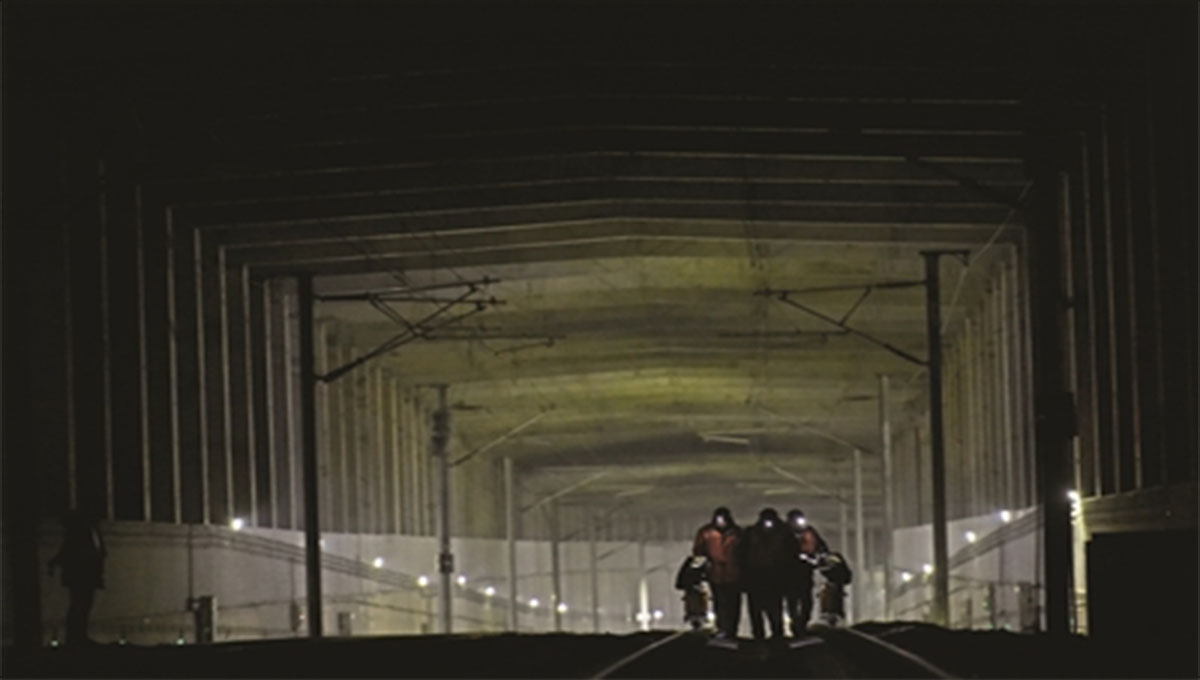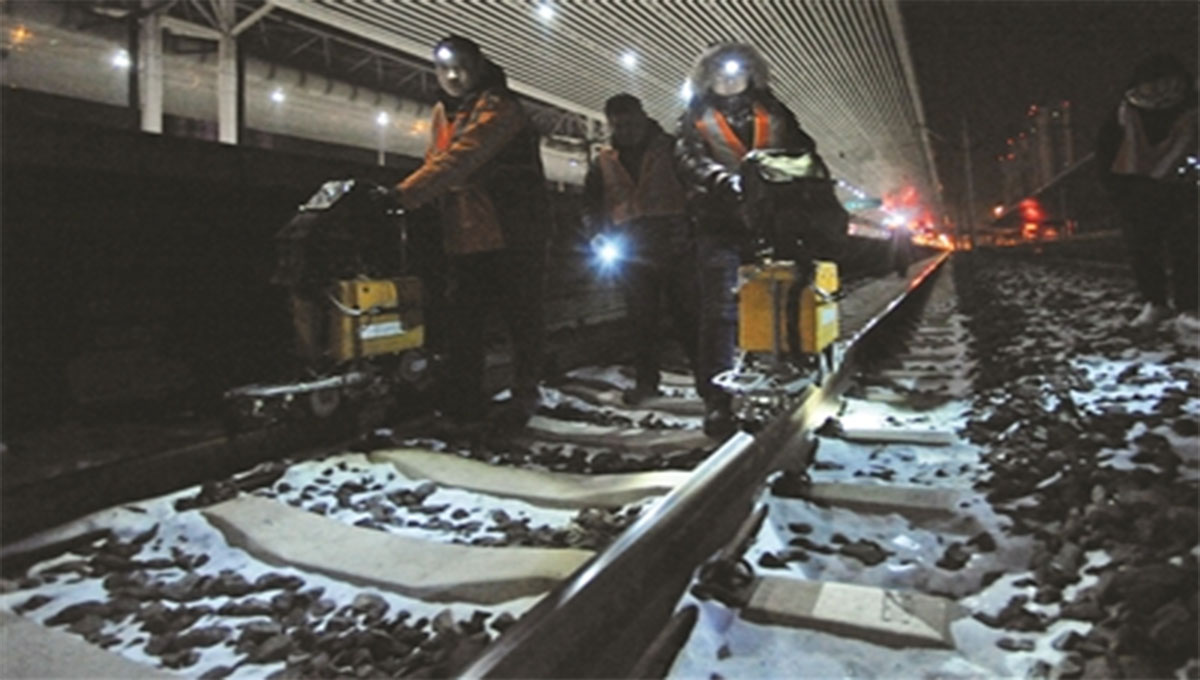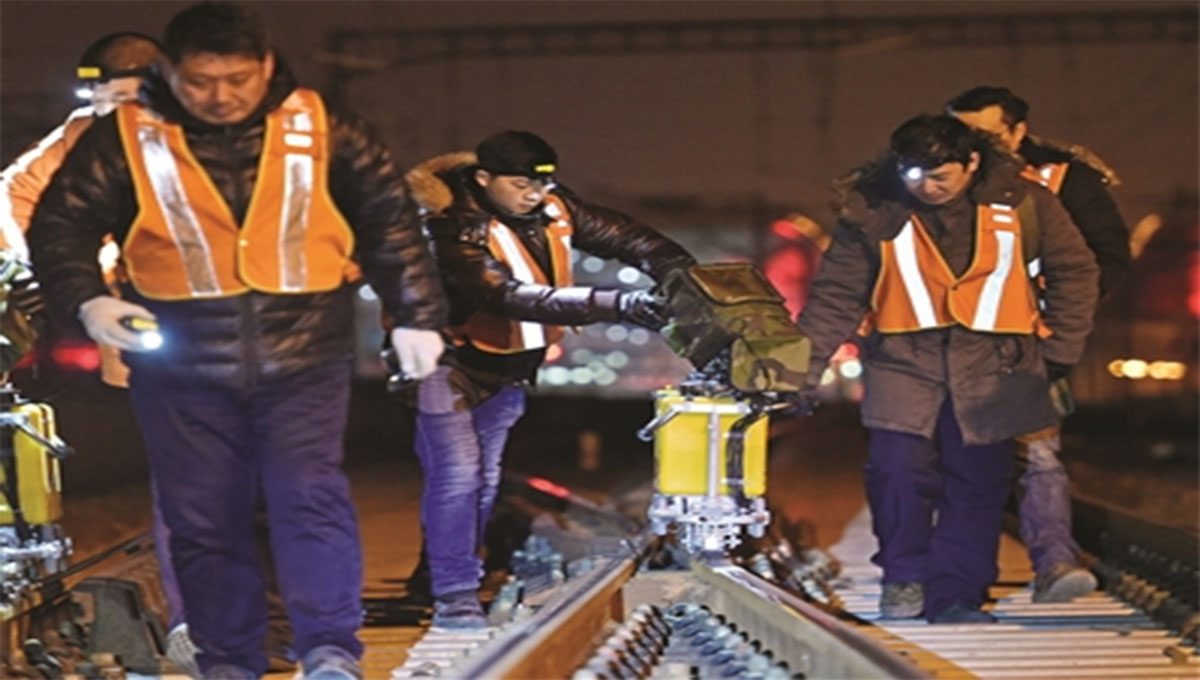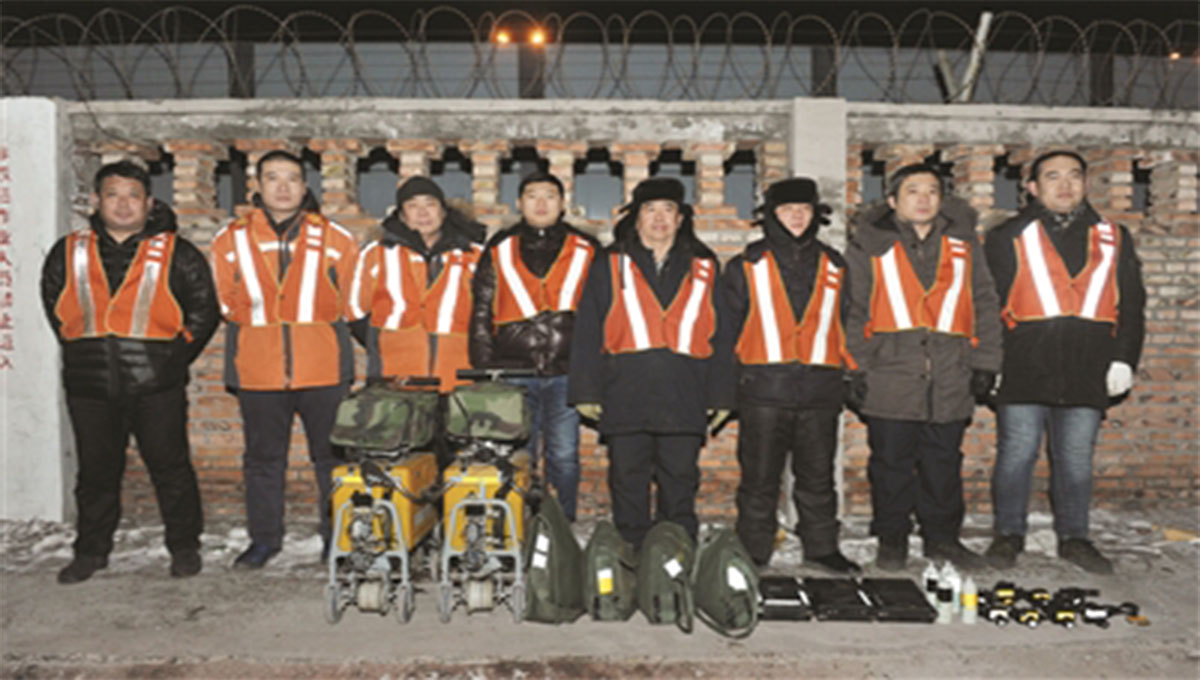Rail Doctor Visiting in the Early Morning

At 0:00 on February 7th, as the night in the city gradually subsided and thousands of households fell asleep, Li Bangyang's work had just begun. Li Bangyang is a "flaw detector" in the Tianjin Flaw Detection Work Area of the comprehensive workshop of the Beijing High Speed Rail Works Section. As the name suggests, the job of flaw detectors is to "check the pulse" for the safety of steel rails, and they are also known as "rail doctors". During the winter of the Spring Festival transportation period, it is the "anti breakage period" of the steel rails. To ensure the safe arrival of millions of passengers, "flaw detection workers" have also entered the busiest period of the year.

At 11:30 p.m. on February 6, Li Bangyang and his colleagues arrived at an "online channel" near the Tanggu railway station of Beijing Tianjin Intercity by bus for more than 50 minutes. Accompanied by the darkness, 7 flaw detectors, tool kits, headlights, small mirrors and other work tools were neatly placed on the ground, waiting for the "online command" issued by the dispatcher. Li Bangyang introduced to the reporter that due to the shutdown of the high-speed railway skylight from 0:30 to 4:30, the inspection work can only be carried out in the early morning. "This is the case all year round, in cold winter and scorching heat." At 0:20 am, Li Bangyang, as the foreman of the Tianjin Inspection Work Area, received the "online instruction" and immediately organized colleagues to count the operating tools. Every tool, from large to small, to a mirror, all responsibilities were assigned to individuals. Just like a doctor undergoing surgery, even dropping a steel wire brush on a high-speed rail line can cause serious accidents, "said Li Bangyang. At 0:30, everything was ready, and Li Bangyang and his colleagues carried instruments of all sizes onto the track in the dark. After walking on the track, the seven flaw detectors were automatically divided into two groups. One group stabilized the base metal flaw detector resembling a handcart on the steel rail and slowly pushed it forward to perform the flaw detection on the base metal; The other group held a universal flaw detector similar to a large Personal stereo, squatted beside the rail, and detected the welds.

“Due to train rolling and Thermal expansion of metal, density changes, cracks and even broken rails may occur inside the rails. Therefore, we will use a rail flaw detector in our work, using its ultrasonic probe to detect the rail head, waist, bottom, and welds Li Bangyang introduced that once cracks are found, the electronic screen of the instrument will display different bands and emit a "squeaking" alarm sound. "We are like B-ultrasound doctors in hospitals, but the monitoring objects are different. One is a human image, and the other is a steel rail pattern." The reporter saw that in addition to using a flaw detector to check for abnormalities inside the steel rail, the flaw detector also carried a small hammer and a small mirror with them, Perform manual inspection. "The small hammer is used to strike the rail and judge whether the rail is damaged by the sound. The sound is crisp under normal conditions and dull under abnormal conditions. The small mirror is used to check under the rail head and the bottom of the rail that cannot be seen by the eyes, just like a doctor's Stethoscope and endoscope, to achieve an all-round physical examination of the steel rail without dead corners." Li Bangyang said that once any abnormality is found, he will report to the workshop, And develop a "treatment plan" through the "injury situation", and immediately replace the severely injured.”

At 1 o'clock in the morning, the cold and moisture mixed, and the outdoor temperature had dropped to -7 ℃ in the cold wind. The cold steel rails even reached -12 ℃. 58 year old flaw detector Jia Xueli knelt half down at the edge of the steel rail, testing every inch of the weld seam on the rail. To detect different parts of the rail head, rail waist, and rail bottom, different probes need to be used. It takes 10 to 15 minutes to see a weld seam. "Jia Xueli squatted numbly and stood up shaking his legs. The reporter noticed that due to the use of liquid coupling agent as the medium during the detection of the flaw detector, Jia Xueli's gloves had already been soaked and frozen out of ice. Jia Xueli has been engaged in flaw detection work for 35 years and has long been accustomed to the wind and rain of outdoor operations. "To be honest, flaw detection work is indeed very difficult. Working at night, we can't see the sun at both ends, and we can't care about our family's affairs. But when we think of our job being to ensure the safe travel of millions of passengers, it feels worth the effort." Another group, operator Zhao Xu, has already pushed the base material flaw detector forward for nearly 2 kilometers in the cold wind. Due to the addition of a coupling agent mixed with alcohol and water, the weight of the entire flaw detector is close to 50 kilograms. In order to maintain a stable and uniform speed on the steel rail, the upper limbs of the operator need to be constantly stretched, and after working overnight, their arms are already numb and weak. On the same day, Zhao Xu and another colleague needed to carry out flaw detection on the 3 km long area near the Tanggu railway station of the Beijing Tianjin Intercity Railway, and it would take 6 km for two round-trip trips. The reporter saw that when Zhao Xu and his colleagues returned to the online channel again, it was already 3:50 am.

During the Spring Festival Movement, trains were added and our inspection cycle was shortened, with more frequent maintenance of the tracks. "Li Bangyang told reporters that in order to ensure the safe operation of the railway during the Spring Festival Movement, he and his colleagues had to conduct a flaw detection along the railway for about 4 hours every morning and walk at least 6 kilometers a day. In recent days, the temperature has been quite decent. In Laba, there were strong winds and temperatures were around minus ten degrees Celsius at night, making it difficult to hold instruments with hands frozen. "Li Bangyang said," Even a millimeter of damage on the steel rail can cause accidents such as rail breakage. Therefore, even in colder weather, one should not be careless. "It is understood that there are a total of 9 inspectors in the Tianjin Inspection Work Area of the comprehensive workshop of the Beijing High Speed Rail Works Section, They are responsible for the flaw detection of 460 kilometers of rails between Tianjin railway station and Jiabao Station of Beijing Tianjin Inter city Extension Line, and between Tianjin railway station and Binhai railway station of Tianjin Qinhuangdao High speed Railway. In these two intervals, there are 2298 aluminum thermal welds alone, which require inspection twice a year. At 4am, with half an hour until the end of the skylight time, Li Bangyang and his colleagues completed their work on time and returned to the online channel. After their elongated backs, it was a safe and smooth steel rail.